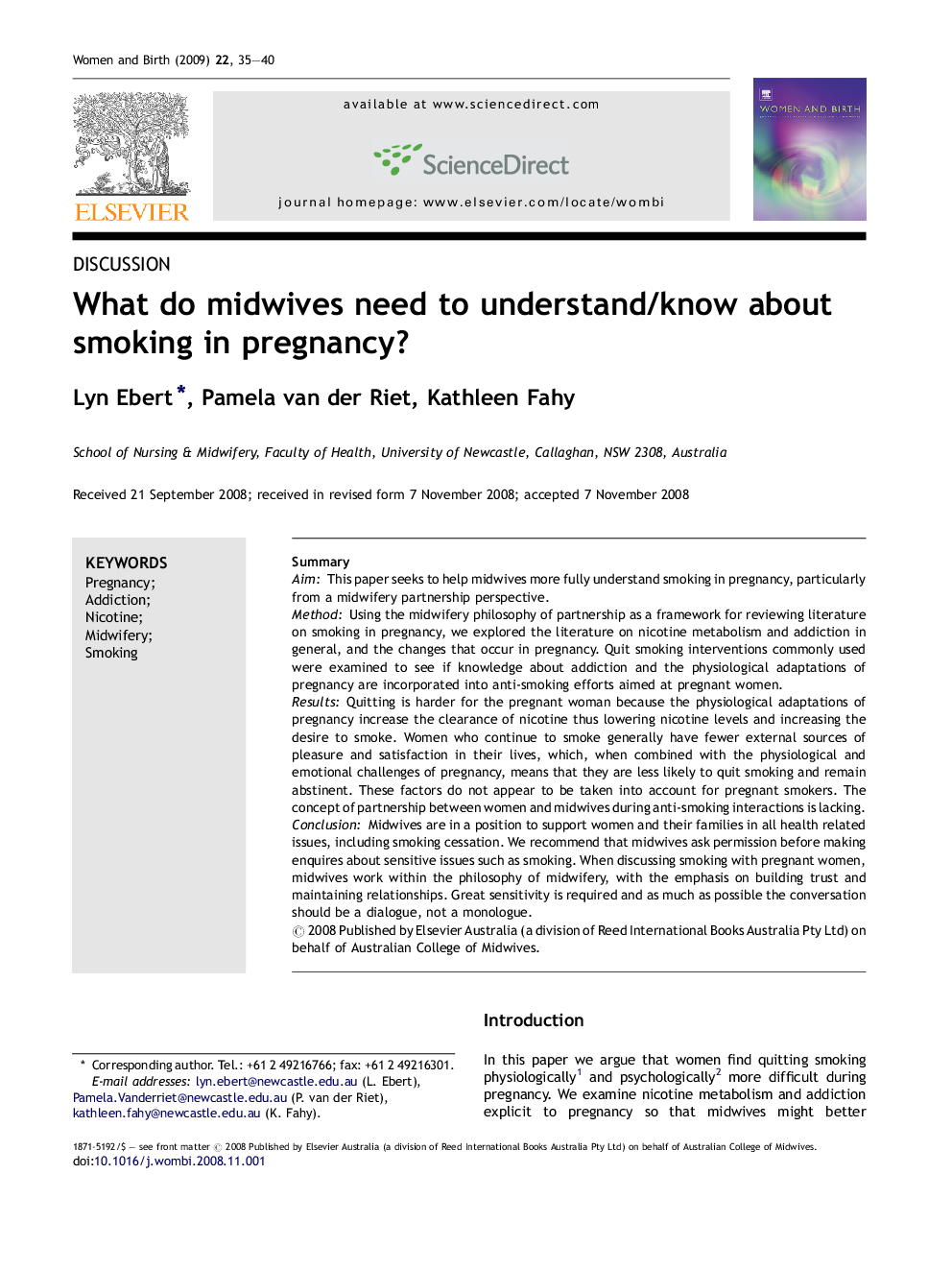| Article ID | Journal | Published Year | Pages | File Type |
|---|---|---|---|---|
| 2636425 | Women and Birth | 2009 | 6 Pages |
SummaryAimThis paper seeks to help midwives more fully understand smoking in pregnancy, particularly from a midwifery partnership perspective.MethodUsing the midwifery philosophy of partnership as a framework for reviewing literature on smoking in pregnancy, we explored the literature on nicotine metabolism and addiction in general, and the changes that occur in pregnancy. Quit smoking interventions commonly used were examined to see if knowledge about addiction and the physiological adaptations of pregnancy are incorporated into anti-smoking efforts aimed at pregnant women.ResultsQuitting is harder for the pregnant woman because the physiological adaptations of pregnancy increase the clearance of nicotine thus lowering nicotine levels and increasing the desire to smoke. Women who continue to smoke generally have fewer external sources of pleasure and satisfaction in their lives, which, when combined with the physiological and emotional challenges of pregnancy, means that they are less likely to quit smoking and remain abstinent. These factors do not appear to be taken into account for pregnant smokers. The concept of partnership between women and midwives during anti-smoking interactions is lacking.ConclusionMidwives are in a position to support women and their families in all health related issues, including smoking cessation. We recommend that midwives ask permission before making enquires about sensitive issues such as smoking. When discussing smoking with pregnant women, midwives work within the philosophy of midwifery, with the emphasis on building trust and maintaining relationships. Great sensitivity is required and as much as possible the conversation should be a dialogue, not a monologue.
